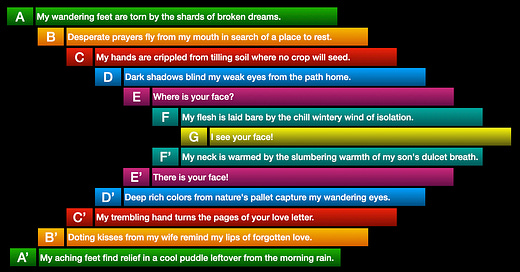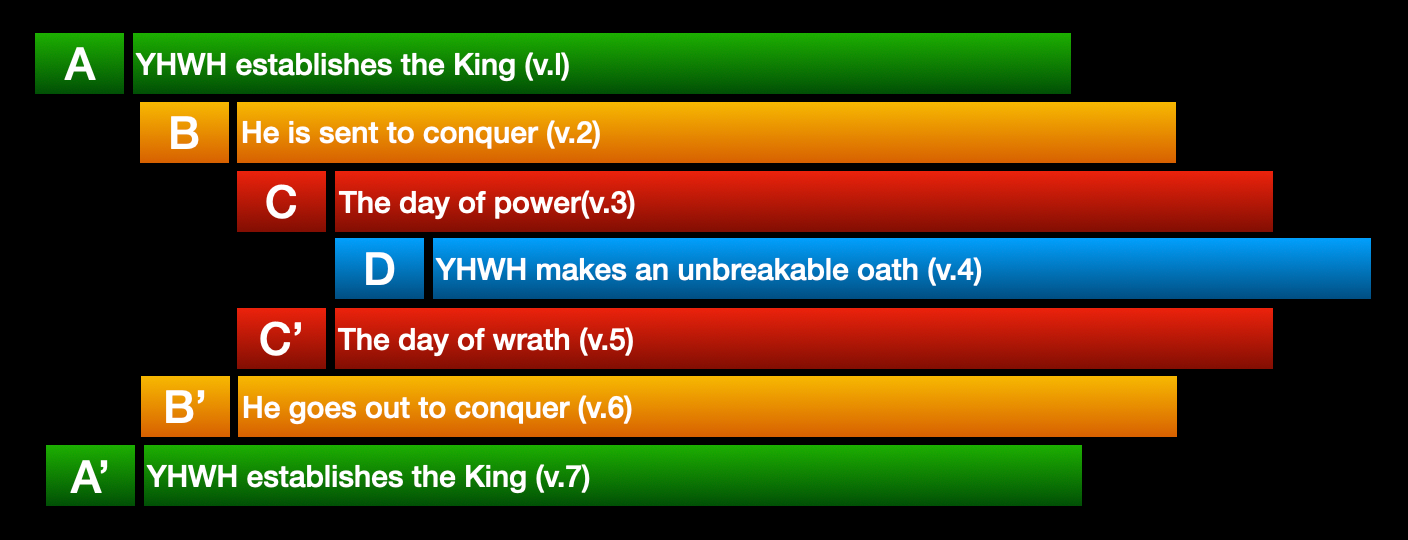I’ve read the Scriptures since I was a little boy, but only in the last 20 years have I learned the value of chiastic structures. A chiasmus is a way to organize lines of poetry or prose so the author can emphasize a broader theme. Once you know what to look for, spotting the chiastic structure can bring a passage alive with meaning.
Robert L. Alden has written about chiasmus and offers this definition.
Sometimes the device is called alternation or introverted parallelism. The word “chiasm” itself comes from the name of the Greek letter chi, which looks like our English letter X. An outline of a verse, a paragraph, or even a book which conforms to such a shape is called “chiastic.” The simplest outline would be A-B-B-A, but more elaborate ones are easily discovered (Journal of the Evangelical Theological Society 21/3 (1978): 199).
Chiastic Structure of Psalms 110
One example is found Psalms 110.
The Lord says to my Lord: “Sit at My right hand Until I make Your enemies a footstool for Your feet.” 2 The Lord will stretch forth Your strong scepter from Zion, saying, “Rule in the midst of Your enemies.” 3 Your people will volunteer freely in the day of Your power; In holy array, from the womb of the dawn, Your youth are to You as the dew. 4 The Lord has sworn and will not change His mind, “You are a priest forever According to the order of Melchizedek.” 5 The Lord is at Your right hand; He will shatter kings in the day of His wrath. 6 He will judge among the nations, He will fill them with corpses, He will shatter the chief men over a broad country. 7 He will drink from the brook by the wayside; Therefore He will lift up His head.
The chiastic structure of the above Psalm is shown in the following diagram. Note how each line has a corresponding thought in a later line: A to A’, B to B’ and C to C’. D is the primary thought for the poem and rests at the apex of the chiasm.
My Use of Chiasmus in Poetry
For me, chiasmi reveal the beauty of the poetry and so I have incorporated this style into my own poetry. The two halves of the poem below are unified into a whole where G is the primary emphasis. Note how each line of despair in A through F is resolved by God’s mercy in lines F’ through A’.
Chiasmus in the New Testament
Beyond poetry, chiastic structure can often be found in other literary forms such as narrative, parable and even, as some suggest, in entire books of the Bible like Matthew’s Gospel.
A few critics in this century have held the view that the whole gospel is governed by one great chiasm or inverted (concentric) parallelism. That is, the gospel is divided into two halves, like the two halves of a parabola: pericopes at the outer limits of the halves correspond to each other (e.g., chaps. 1–2 and 26–28), pericopes a little further in correspond to each other (e.g., chaps. 3–4 and 24–25), and so on until one reaches the center of the chiasm at the center of the gospel. Green (1968) sees the center in chap. 11, while Fenton (1959) and Ellis (1974) see the center in chap. 13 (Anchor Bible Dictionary, vol 4 pg. 627).
In my own study of Scripture, I have found a few places in the teachings of Jesus where he used chaismus to add a depth of meaning to his words. Keep checking back and over time I’ll share more examples and how chiastic structure have influence my understanding of Scripture.






